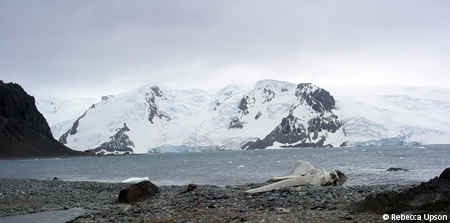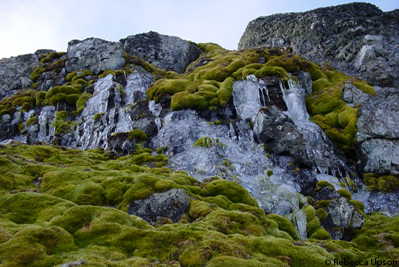


The British Antarctic Territory (BAT) is an area of Antarctica which is administered by the United Kingdom. It is a region mostly formed by offshore islands, situated south of 60°S latitude and between longitudes 20°W and 80°W. Although the area was explored much earlier by adventurous travelers and whalers the territory was only officially formed in 1962. There are no native inhabitants in BAT and the islands are mainly used to give access to the scientific research stations in the Antarctic.
Most of the landmass in the Antarctica is permanently covered with ice. However, life is still present in the 1% of the region that is ice and snow free. In these areas, there are large numbers of seals, penguins and birds, as well as a variety of mosses, liverworts, lichens and fungi. According to the British Antarctic Survey, there are, in total, around 100 species of mosses, 25 species of liverworts, and 300 to 400 species of lichens in the Antarctica. They can tolerate low temperatures and dehydration, being specially adapted to surviving in extreme environments. Trees and shrubs do not grow in these conditions. There are only two species of flowering plants that occur in the Antarctica, the Antarctic hair grass (Deschampsia antarctica) and Antarctic pearlwort (Colobanthus quitensis). These arise along the warmer parts of the Antarctica Peninsula and in the South Orkney Islands and the South Shetland Islands.
 Conservation challenges
Conservation challenges
The Antarctic Territory is protected by the Antarctic Treaty since 1961 and several islands are designated protected areas. However, human activities such as whale and seal hunts and the more recent waves of tourists unintentionally carried exotic species into these regions. Invasive species are the biggest threat to the native flora of Antarctica and we should ensure that we can minimize the associated risks.
Please use the links below to see further details on conservation activities in the UK Overseas Territories
British Indian Ocean Territory
South Georgia and the South Sandwich IslandsSovereign Base Areas on Cyprus
Homepage of the UKOTs Online Herbarium
Homepage of the British Antarctic Survey Online Herbarium


